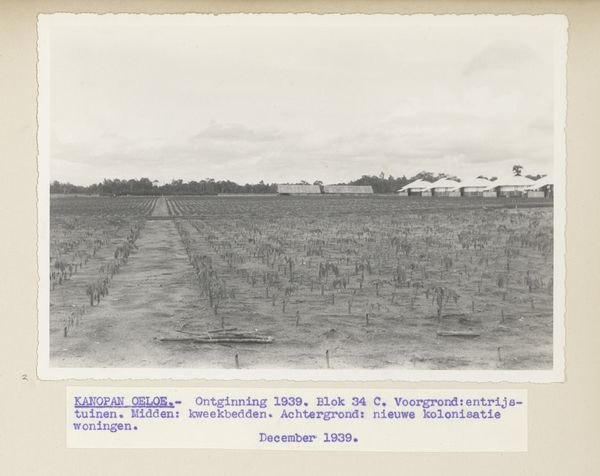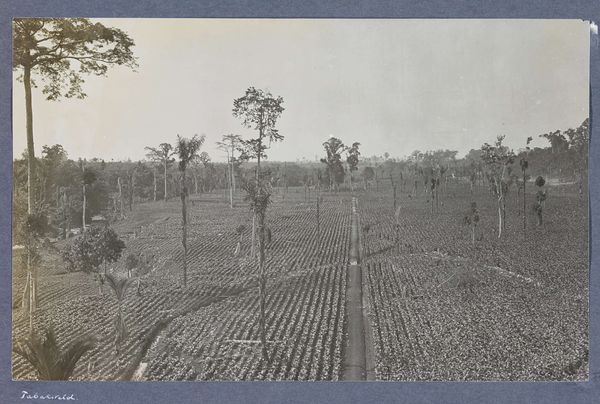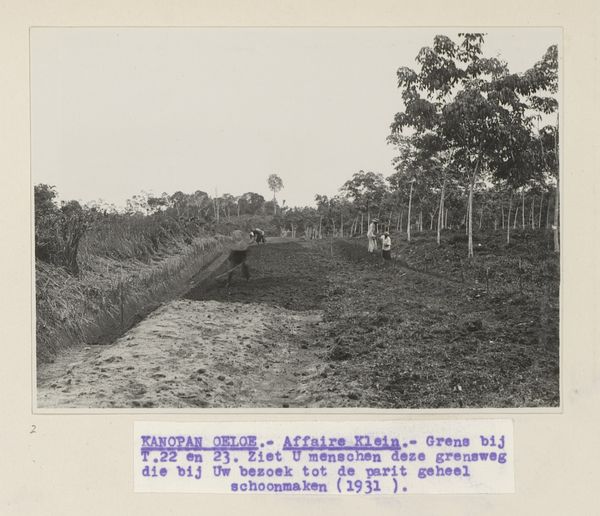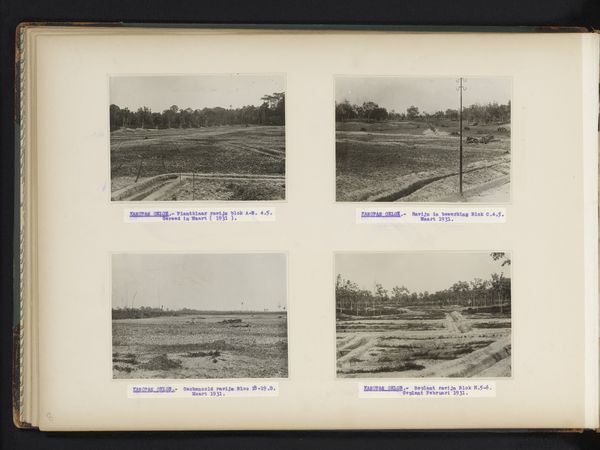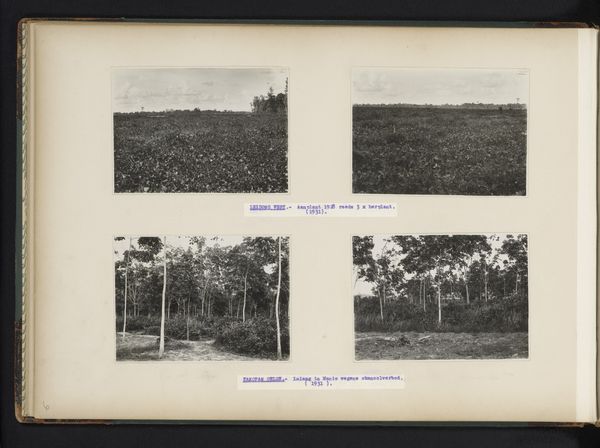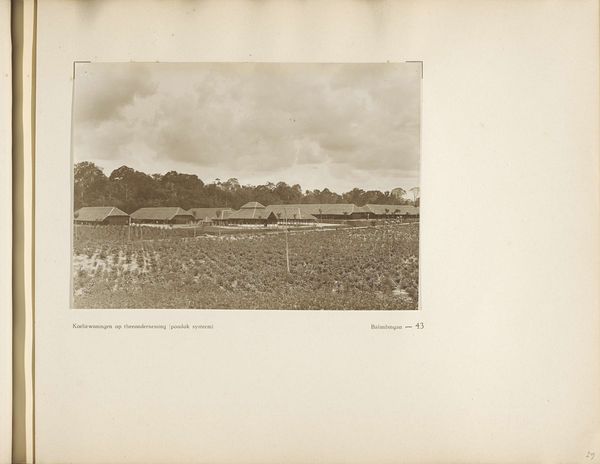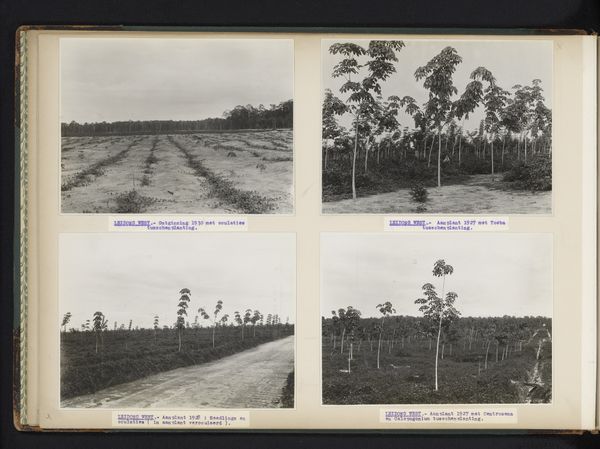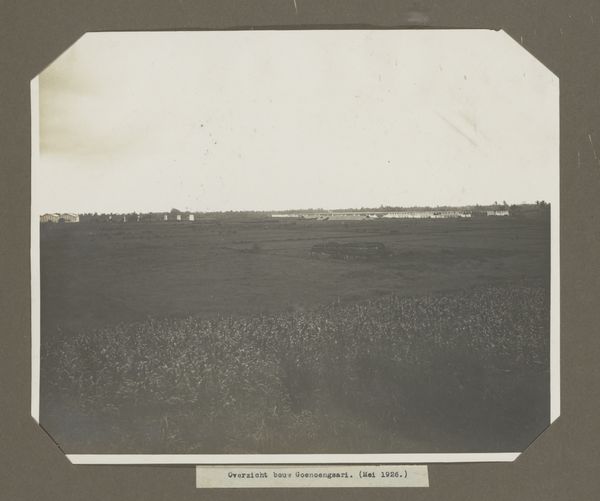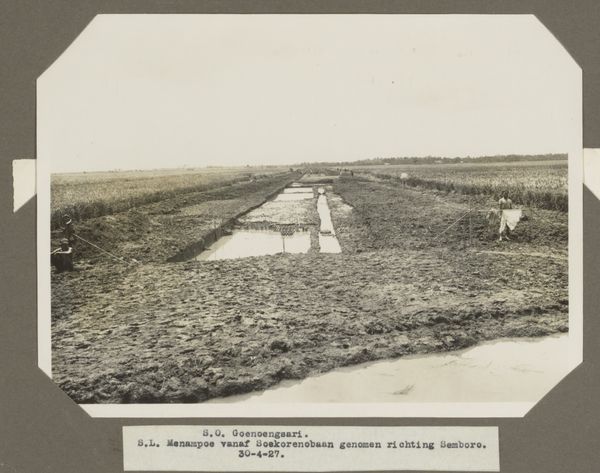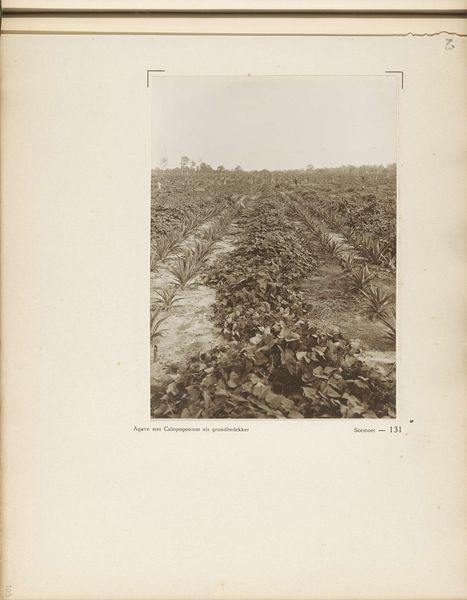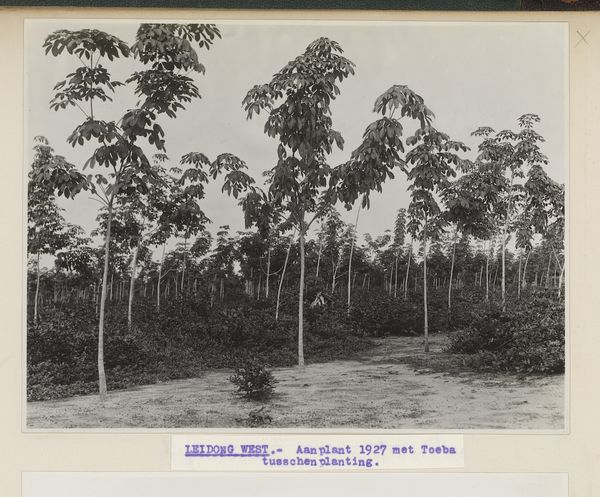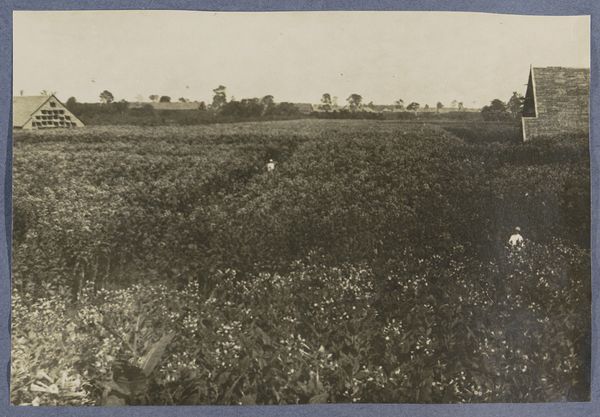
photography
#
pictorialism
#
landscape
#
photography
Dimensions: height 152 mm, width 202 mm
Copyright: Rijks Museum: Open Domain
Editor: Here we have an anonymous photograph from the 1930s, titled "Leidong West - Ontginning 1930 met oculaties tusschenplanting." It depicts a landscape under cultivation; it’s almost industrial in its regimented layout. What strikes you about it? Curator: The material processes are the core of this work. "Ontginning" suggests exploitation. Notice the careful documentation; the image itself becomes a tool of colonial administration. This is about transforming land into a commodity. What labor do you imagine went into creating this landscape? Editor: I hadn't considered the implied labor. It looks like hard work, especially considering the scale of the project. So, the photograph isn’t just a neutral depiction of a landscape, but a record of resource extraction and potentially forced labor? Curator: Exactly! Photography becomes a tool for promoting colonial exploitation, masking the raw exertion required with the pretense of picturesque order. What does the image tell us, and what does it hide? Consider also what isn’t shown - the people affected by this transformation of land. How do you interpret "oculaties tusschenplanting," or graftings and interplanting? Editor: Grafting and interplanting sound like a forced manipulation of nature, very deliberate. Is the starkness a result of photographic style or a reflection of a disrupted ecosystem? Curator: Probably both. Pictorialism used techniques to soften the image, but the very subject matter here speaks volumes about human manipulation. The means of production are inseparable from the final image. What new understanding have you gained? Editor: It's a stark reminder that even seemingly benign landscapes can represent complex issues of labor, control, and environmental impact. Seeing photography as an instrument of power changes my perspective. Curator: Indeed, recognizing art as shaped by materiality, production and purpose, encourages us to look beyond aesthetics to understand social forces at play.
Comments
No comments
Be the first to comment and join the conversation on the ultimate creative platform.
